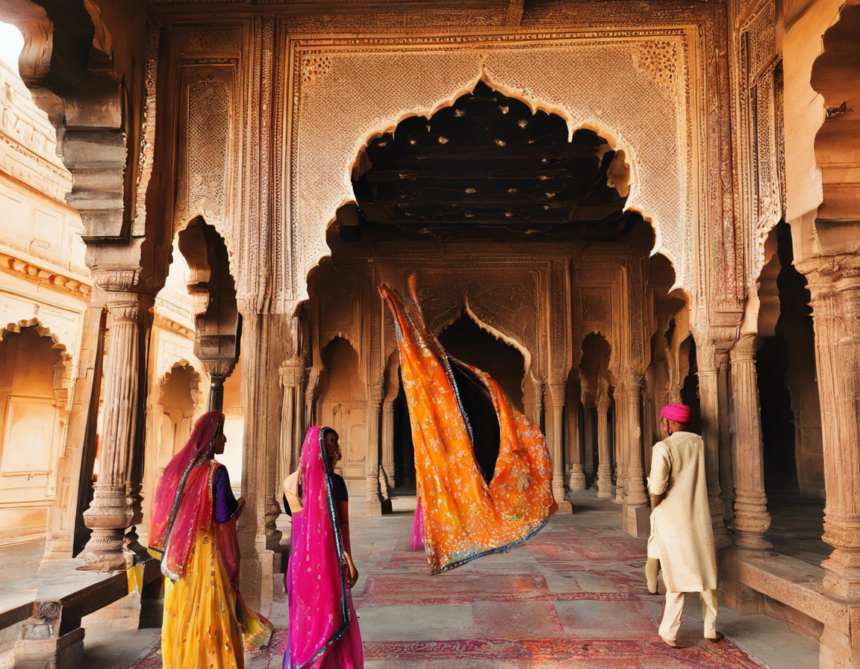Rajasthan: The Land of History, Culture, and Jile
Introduction
Rajasthan, the largest state in India by area, is located in the northwest part of the country. Known for its rich history, vibrant culture, and majestic forts and palaces, Rajasthan is also famous for its administrative divisions called “jile” or districts. With a total of 33 districts, Rajasthan stands as a diverse and culturally rich state with each district contributing its own unique flavor to the overall tapestry of the state.
Significance of Jile in Rajasthan
The districts or “jile” in Rajasthan play a crucial role in the state’s administrative and political structure. Each district is headed by a District Collector who is responsible for overseeing the implementation of government schemes and policies at the grassroots level. The district administration is instrumental in maintaining law and order, revenue collection, and overall governance in the region.
Count of Jile in Rajasthan
Rajasthan is divided into 33 districts, each with its own distinct identity and cultural heritage. These districts are further grouped into different divisions for administrative convenience. Some of the major divisions in Rajasthan include Jaipur, Jodhpur, Udaipur, and Ajmer, each comprising a certain number of districts under its jurisdiction.
Districts of Rajasthan
- Ajmer District – Known for the Ajmer Sharif Dargah, an important pilgrimage site for Muslims.
- Alwar District – Famous for the Sariska Tiger Reserve and the historic city of Alwar.
- Banswara District – Renowned for its tribal culture and natural beauty.
- Baran District – Home to the Mukundara Hills Tiger Reserve and the ancient city of Baran.
- Barmer District – Known for its desert landscapes and historical sites like Kiradu Temples.
- Bharatpur District – Famous for the Keoladeo National Park, a UNESCO World Heritage Site.
- Bhilwara District – Known for its textile industry and historical significance.
- Bikaner District – Renowned for the Junagarh Fort and the annual Camel Festival.
- Bundi District – Famous for its stepwell, temples, and historical architecture.
- Chittorgarh District – Known for the Chittorgarh Fort, a symbol of Rajput valor and sacrifice.
- Churu District – Famous for its havelis and historical buildings showcasing Rajasthani architecture.
- Dausa District – Known for the Abhaneri stepwell and Mehandipur Balaji Temple.
- Dholpur District – Renowned for its natural beauty and historical significance.
- Dungarpur District – Famous for its lakes, palaces, and tribal culture.
- Hanumangarh District – Known for its historical sites and agricultural importance.
- Jaipur District – The capital city of Rajasthan, known for its forts, palaces, and vibrant culture.
- Jaisalmer District – Famous for the Jaisalmer Fort and the Sam Sand Dunes.
- Jalore District – Renowned for its historical sites like Jalore Fort and Sire Mandir.
- Jhalawar District – Known for its forts, temples, and natural beauty.
- Jhunjhunu District – Famous for its havelis, forts, and fresco paintings.
- Jodhpur District – Known for the Mehrangarh Fort and vibrant local markets.
- Karauli District – Renowned for the Kaila Devi Temple and Karauli City Palace.
- Kota District – Famous for the Chambal Garden and Kota Barrage.
- Nagaur District – Known for the Nagaur Fort, a stunning example of Rajput architecture.
- Pali District – Renowned for its temples, forts, and industrial significance.
- Pratapgarh District – Famous for the Pratapgarh Fort and its natural beauty.
- Rajsamand District – Known for the Rajsamand Lake and Kumbhalgarh Fort.
- Sawai Madhopur District – Renowned for the Ranthambore National Park and the Ranthambore Fort.
- Sikar District – Famous for its havelis, temples, and historical significance.
- Sirohi District – Known for the Mount Abu hill station and the Ranakpur Jain Temple.
- Sri Ganganagar District – Renowned for its agricultural productivity and historical sites.
- Tonk District – Famous for its architecture, mosques, and Hadi Rani Mahal.
- Udaipur District – Known for the City Palace, Lake Pichola, and the Eklingji Temple.
FAQs about Jile in Rajasthan
1. How many districts are there in Rajasthan?
– Rajasthan is divided into 33 districts.
2. Which is the largest district in Rajasthan by area?
– Jaisalmer is the largest district in Rajasthan by area.
3. What is the role of a District Collector in Rajasthan?
– The District Collector is responsible for overseeing the implementation of government schemes, maintaining law and order, and ensuring overall governance in the district.
4. Which district in Rajasthan is famous for its textile industry?
– Bhilwara District is renowned for its textile industry.
5. What are some popular tourist attractions in Rajasthan apart from Jaipur and Udaipur?
– Some popular tourist attractions in Rajasthan include Jaisalmer Fort, Chittorgarh Fort, Ranthambore National Park, and Mount Abu.
6. Which district in Rajasthan is known for its tribal culture?
– Banswara District is famous for its tribal culture.
7. What is the historical significance of Chittorgarh District in Rajasthan?
– Chittorgarh District is known for the Chittorgarh Fort, a symbol of Rajput valor and sacrifice.
8. How many divisions are there in Rajasthan for administrative purposes?
– Rajasthan is divided into several divisions including Jaipur, Jodhpur, Udaipur, and Ajmer.
9. Which district in Rajasthan is renowned for its temples and forts?
– Pali District is famous for its temples, forts, and industrial significance.
10. What makes Rajsamand District a popular destination in Rajasthan?
– Rajsamand District is known for the Rajsamand Lake and the majestic Kumbhalgarh Fort.
In conclusion, the districts or “jile” of Rajasthan are not just administrative units but repositories of rich history, culture, and heritage. Each district in Rajasthan has its own story to tell, its own unique attractions to offer, and its own contribution to the colorful tapestry of the state. Whether it’s the desert landscapes of Jaisalmer, the tribal culture of Banswara, or the historical significance of Chittorgarh, Rajasthan’s districts have something for everyone to explore and experience.


Leave a Reply